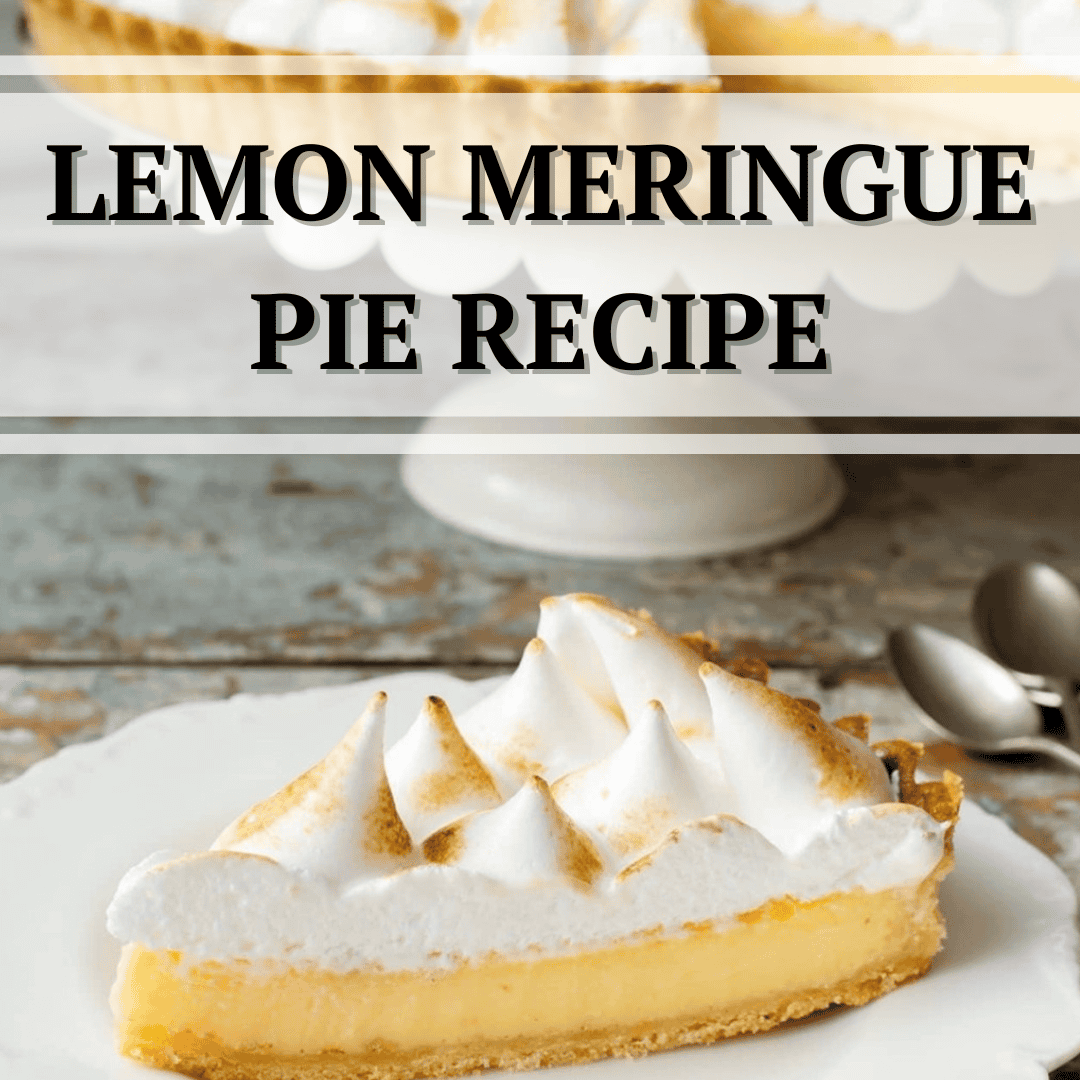There’s something timeless about a lemon meringue pie. It’s bright, creamy, and light enough to balance out a hearty Thanksgiving dinner. Every bite hits that perfect trio of flavors—sweet, tangy, and airy—with a buttery crust holding it all together.
It’s a bit of a showstopper dessert, but don’t let that intimidate you. Once you understand how each layer works, it’s surprisingly simple to pull together.
The 3 Components of a Perfect Lemon Meringue Pie
A lemon meringue pie is made up of three delicious layers, each playing an essential role in the final dessert.
1. The Crust
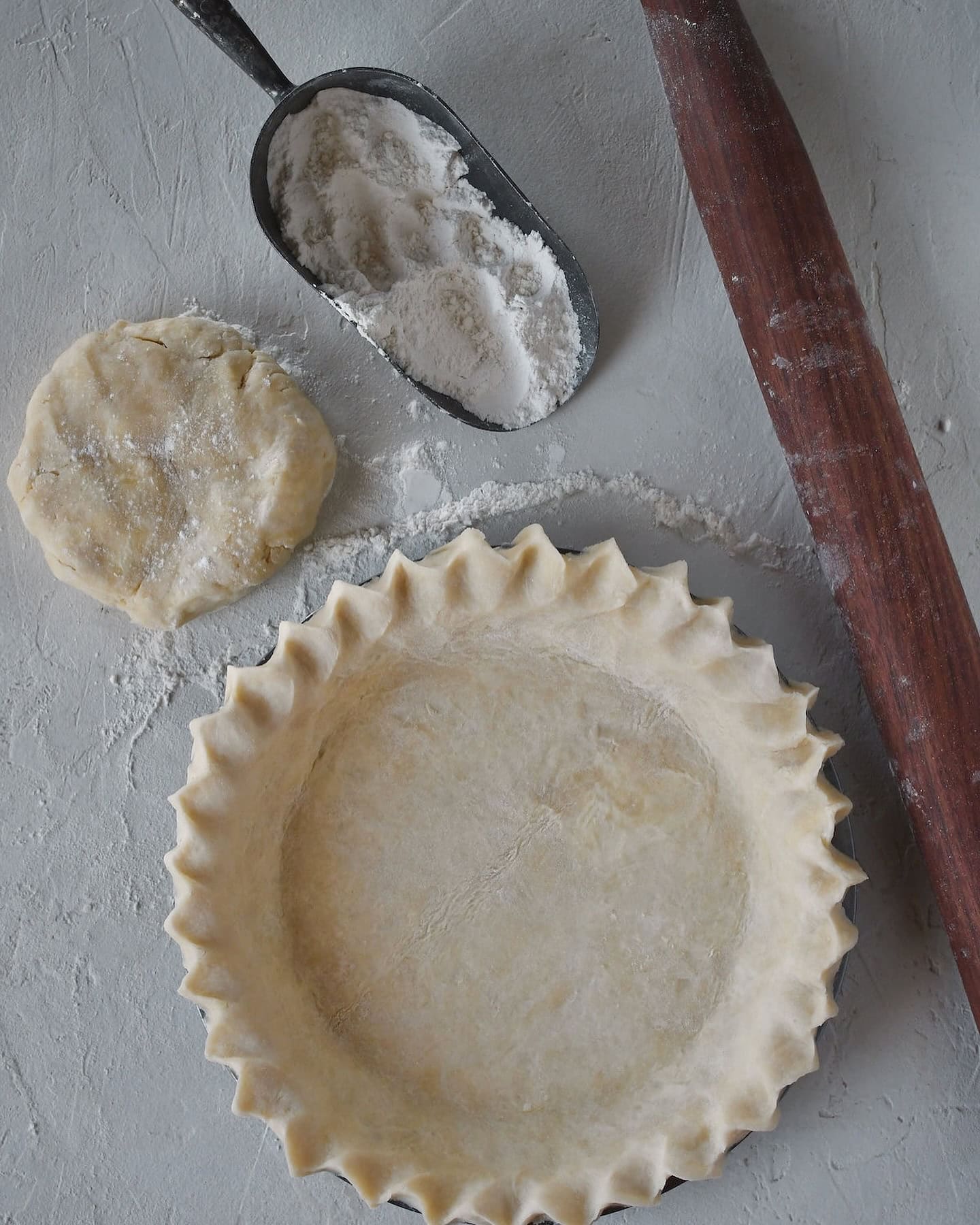
This forms the foundation of your pie. You can use a traditional buttery homemade pie crust or a store-bought version to save time. The key is to blind-bake the crust before adding the filling. This ensures it stays crisp and doesn’t turn soggy under the lemon curd.
If you want a different flavor profile, a graham cracker crust or even a shortbread crust can work beautifully, offering a sweet, crumbly contrast to the tart filling.
2. The Lemon Filling
This is the star of the show—the smooth, tangy lemon curd that gives the pie its signature zing. It’s usually made from egg yolks, sugar, cornstarch, lemon juice, and zest, all cooked together until thickened.
The secret to a perfect filling is constant whisking and patience. Cook it gently until it coats the back of a spoon, then pour it into the pre-baked crust while still warm.
To prevent a watery or runny filling, make sure the mixture comes to a full, gentle boil so the cornstarch activates properly.
3. The Meringue Topping
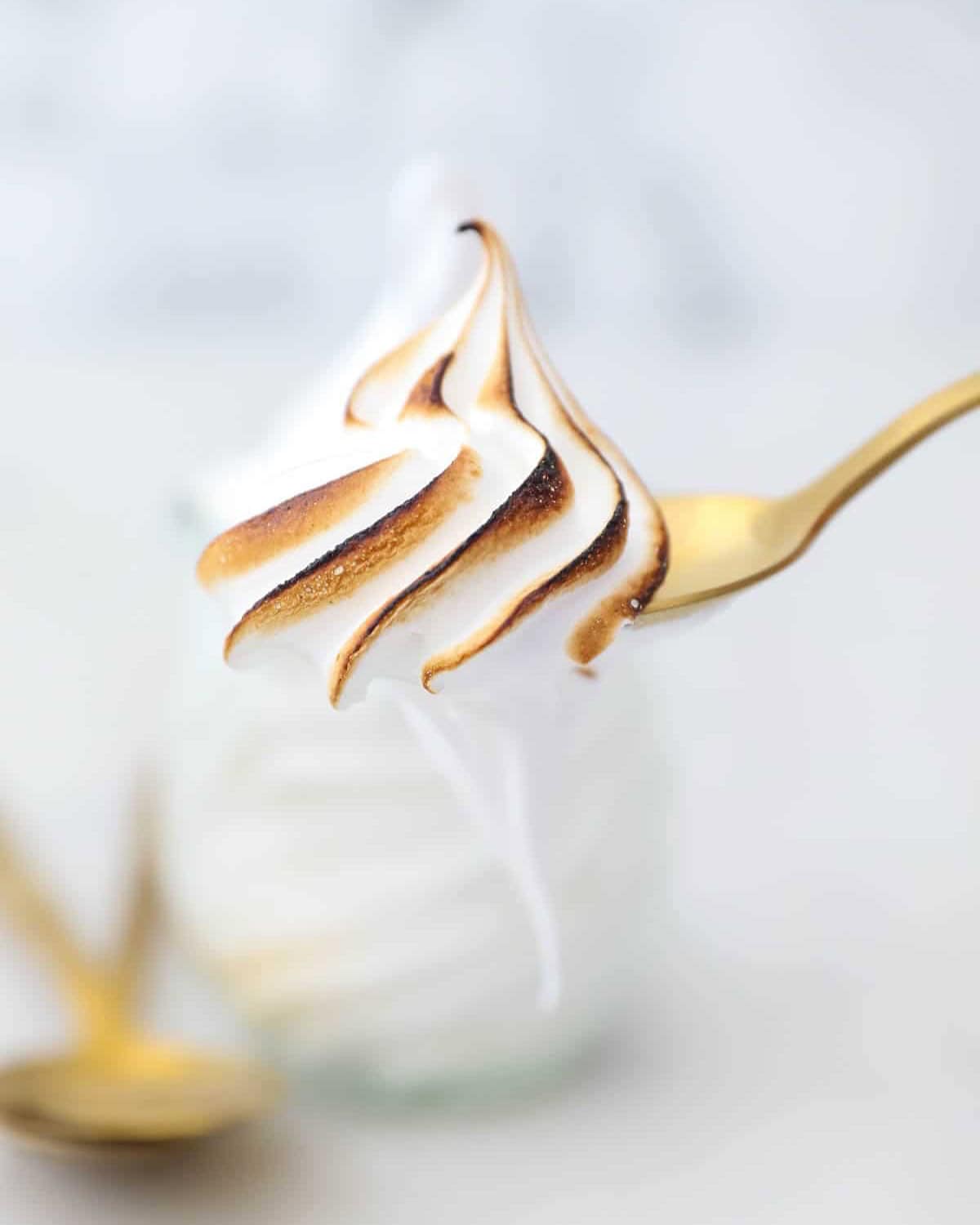
The meringue is that glossy, cloud-like topping that makes the pie iconic. It’s made from whipped egg whites and sugar, beaten to stiff peaks and spread over the warm lemon filling before baking.
The warmth helps the meringue adhere to the filling, preventing it from shrinking or separating during baking.
If you’re vegan or allergic to eggs, don’t worry, you can make a plant-based version using aquafaba, the liquid from canned chickpeas. It whips up beautifully and mimics egg whites almost perfectly.
What Is Meringue, Exactly?
Meringue is simply sweetened whipped egg whites stabilized with sugar. There are a few types—French, Swiss, and Italian—but for lemon meringue pie, you’ll typically use a French meringue, where sugar is gradually added to whipped egg whites until stiff, glossy peaks form.
For a sturdier topping that holds up better on the counter, you can also try a Swiss meringue, made by gently heating the sugar and egg whites before whipping.
If you’re new to making meringue, make sure your mixing bowl is clean and grease-free—any oil or yolk residue can prevent the whites from whipping properly.
Recipe Variations and Substitutions
There are a few fun ways to play with this classic recipe. For extra depth, you can add vanilla bean paste or a touch of orange zest to the lemon filling.
If you’re dairy-free, use plant-based butter in your crust and filling. For a gluten-free crust, substitute almond flour or use a gluten-free flour blend.
Vegan bakers can replace the meringue with aquafaba whipped with sugar and cream of tartar—it’s airy, glossy, and surprisingly similar in texture.
Storage and Make-Ahead Tips
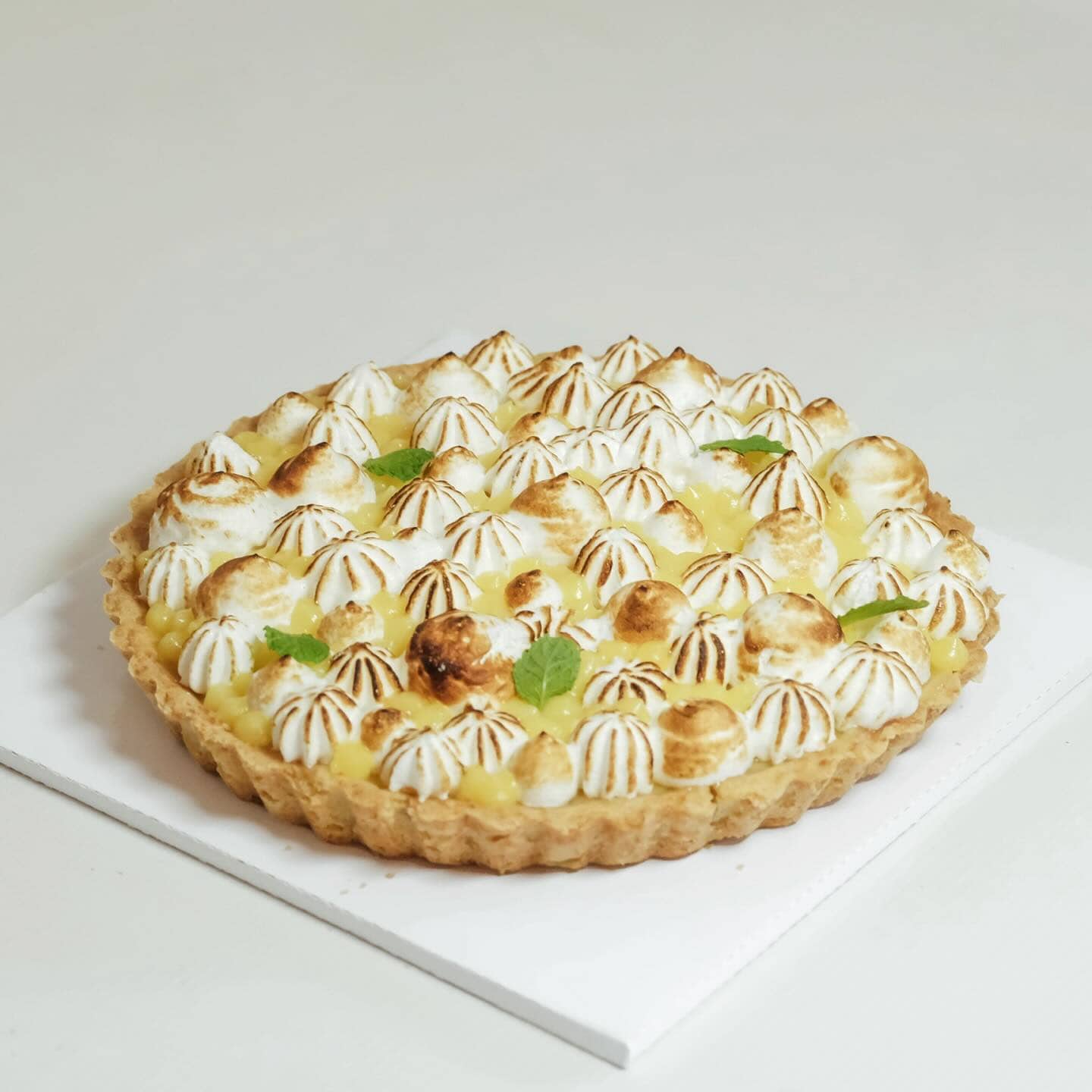
Lemon meringue pie is best served the day it’s made, but you can make the crust and lemon filling ahead of time.
The crust can be baked and stored at room temperature for up to two days. The lemon filling can be cooked and refrigerated for up to 24 hours; just reheat it gently before adding to the crust.
If you need to refrigerate the whole pie, cover it loosely with plastic wrap and store it for up to 2 days. Avoid covering tightly, as condensation can ruin the meringue’s texture.
Freezing isn’t recommended because both the curd and meringue tend to separate and weep when thawed.
Frequently Asked Questions
What’s the difference between lemon meringue pie and lemon tart?
A lemon tart is simpler—just a buttery crust with lemon curd, no meringue. A lemon meringue pie has that light, fluffy topping baked right on top.
Can I use bottled lemon juice?
Fresh lemon juice is always best. It gives the pie a brighter, cleaner flavor. Bottled juice can make the filling taste slightly bitter.
How do I keep my meringue from weeping?
Spread it over hot lemon filling, and make sure it’s fully baked until the peaks are lightly golden. Avoid refrigerating the pie too soon after baking.
Can I make this without an oven?
Yes. If you have an air fryer, you can assemble mini versions and “bake” them at 320°F (160°C) for about 8–10 minutes. For a no-bake option, skip the meringue and serve it as lemon cream pie topped with whipped cream instead.
Can I make lemon meringue pie vegan?
Definitely! You can use aquafaba for the meringue and a vegan butter alternative in the crust. The lemon filling can be thickened with cornstarch and plant-based milk instead of eggs.
Lemon Meringue Pie Recipe
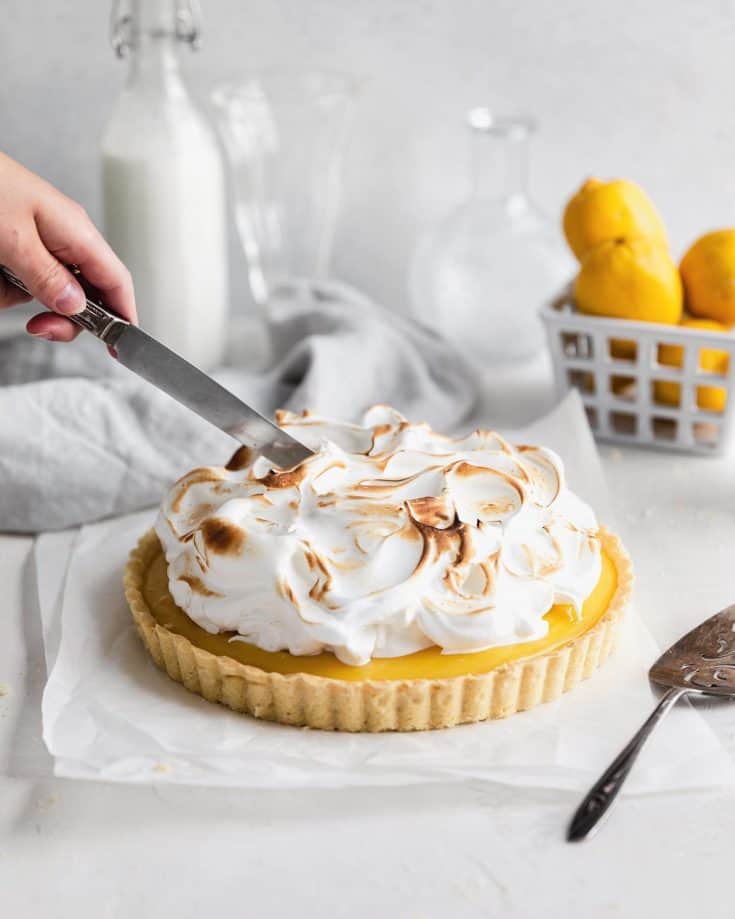
Image credit: @bromabakery
Ingredients
For the Crust
- 1 ½ cups all-purpose flour
- ½ teaspoon salt
- ½ cup cold butter, cubed
- 3–4 tablespoons ice water
For the Lemon Filling
- 1 cup granulated sugar
- 2 tablespoons cornstarch
- ¼ teaspoon salt
- 1 ½ cups water
- 3 large egg yolks, beaten
- ¼ cup butter
- ½ cup fresh lemon juice
- 1 tablespoon lemon zest
For the Meringue Topping
- 3 large egg whites
- ¼ teaspoon cream of tartar
- 6 tablespoons sugar
Instructions
- Prebake the crust. Prepare and blind-bake the pie crust at 400°F (200°C) for 12–15 minutes until golden. Set aside.
- Make the filling. Whisk sugar, cornstarch, and salt in a saucepan. Gradually add water and cook until thickened. Stir in lemon juice, zest, butter, and egg yolks. Cook for another minute until smooth. Pour into the hot crust.
- Whip the meringue. Beat egg whites and cream of tartar until soft peaks form. Gradually add sugar and beat until stiff peaks form.
- Assemble the pie. Spread meringue over the warm filling, sealing edges to the crust.
- Bake and cool. Bake at 350°F (175°C) for 12–15 minutes, until golden peaks form. Let cool completely before slicing.
Featured image credit: @sophiaskitchen.world

